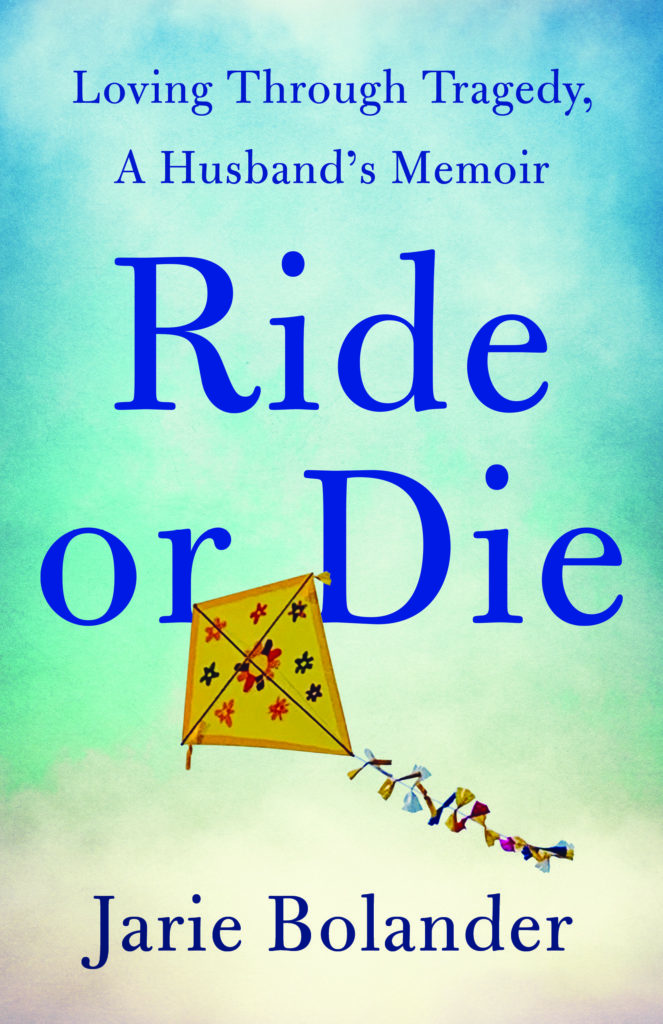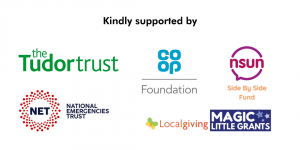Jarie Bolander and his wife were just 35 when he lost her to leukaemia. In his upcoming memoir ‘Ride or Die’, he reflects on caregiving, grief, joy, and loss from the often-overlooked male perspective.
I never gave my wedding vows much thought. The standard refrain “in sickness and in health. Till death us do part” seems simple enough to say. Yet, I found myself putting those words into action when my wife Jane got diagnosed with leukaemia.
To say that our lives changed in an instant when we found out she had leukaemia would be an understatement. Sure, the plans for a fancy dinner on that day, December 26th, 2015, would be cancelled but the full weight of that day would not be in that instant. Rather, it would be in the little instances of joy, sorrow, grief, frustration, and love that would test us daily.

The origin of “Ride or Die” comes from several places. The most recent usage comes from hip hop where you’re a ride or die girl to your man, no matter what he might do. What it meant to Jane and I is that we were each other’s top priority and were fully supportive and dedicated to each other no matter what.
“As I unpacked and sorted, I was struck by how quickly our relationship had morphed into something new. The [cancer fighting] kit was one part of that. Before Jane got sick, we were a type A power couple, conquering the world together. Now I was the designated care- giver, and Jane was the dependent who relied on me for physical and emotional support. I had to be her caregiver and advocate. Her family would help in any way they could, and mine would offer to help, but I was captain of Team Jane with a singular goal: to make sure we didn’t lose the MVP.”
Another aspect that revealed itself as time went on is understanding that you need to accept your partner fully, flaws, frustrations, and all. That aspect was challenging when “chemo brain” would take over your 35 year old premenopausal wife who would run fevers so high that she would hallucinate that there were baby elephants roaming her room looking for peanuts. How do you calm someone down who is going through that?
A surprising aspect of Jane’s fifteen month leukaemia ordeal was how close we became as a couple. The challenges and struggles we overcame were monumental and that shared hardship deepened our resolve to weather any situation together to the end. Working through all those tough times forged a trust and a deep sense of love and commitment that made it easier for me to deal with the grief and sorrow that I would have to endure.
The fact that Jane loved me so much that she worried about my wellbeing when she died was both a frustrating idea to consider and an act of love so profound that I hope I can do the same when I face the end.
Being ride or die is not without its pitfalls. Both parties have to be committed fully, have equal respect for each other and a reciprocal relationship. It has to go both ways.
In some cases, that equality can’t occur. Jane could not be fully engaged in our relationship because she was fully committed to battling leukemia. So she did not have the capacity to show up equally. I knew that she wanted to and that notion gave me the fortitude to march on.
“Look, Babesteins. It’s our new son, Greenie.” Jane held out a green stuffed animal. “The chaplain gave him to me. Isn’t he cute?” We were on day six after our ER visit. Jane was feeling a lot better. No more fever and her counts were generally good. “Yeah.” I was not that interested in a stuffed toy but liked the smile it brought to Jane’s face. “That was nice of the chaplain.” This was the first time I had heard of a chaplain coming to Jane’s room to visit, so that concerned me. She had been in the hospital five times before with no visits. “Greenie has been with me all day, unlike someone else I know.” Jane scowled at me to underline her point.
The challenge is that while the commitment to each other is strong and the mission is clear, as a caregiver, I lost myself in the struggle. My own needs fell to the wayside and the basic necessity of self-care went out the window. It’s hard to want to take time for yourself when you know that your partner can’t shower without your help and is sequestered in a 9 x 12 foot light peach hospital room, 24/7, sustaining herself on cornbread chicken and chocolate pudding chased by an Ensure shake.
One of the lessons I learned from this whole experience is that in order to ride or die with your partner, you have to “put your oxygen mask on first.” You hear that so often when flying that it gets lost in the shuffle between buckling your seatbelt and putting your tray tables in the full upright position.
The notion of self-care also gets lost in the shuffle when you find yourself fully committed to a partner that’s battling a life-threatening illness. The idea to take time away from helping them survive feels selfish yet in order to be fully “ride or die” you also have to be fully able to be on the ride. When rooted in mutual care, trust, and friendship, a ride or die relationship can be a profound sense of strength to get through tough situations even after one of you dies.
Ride or Die by Jarie Bolander is available now, in paperback or on Amazon Kindle.

